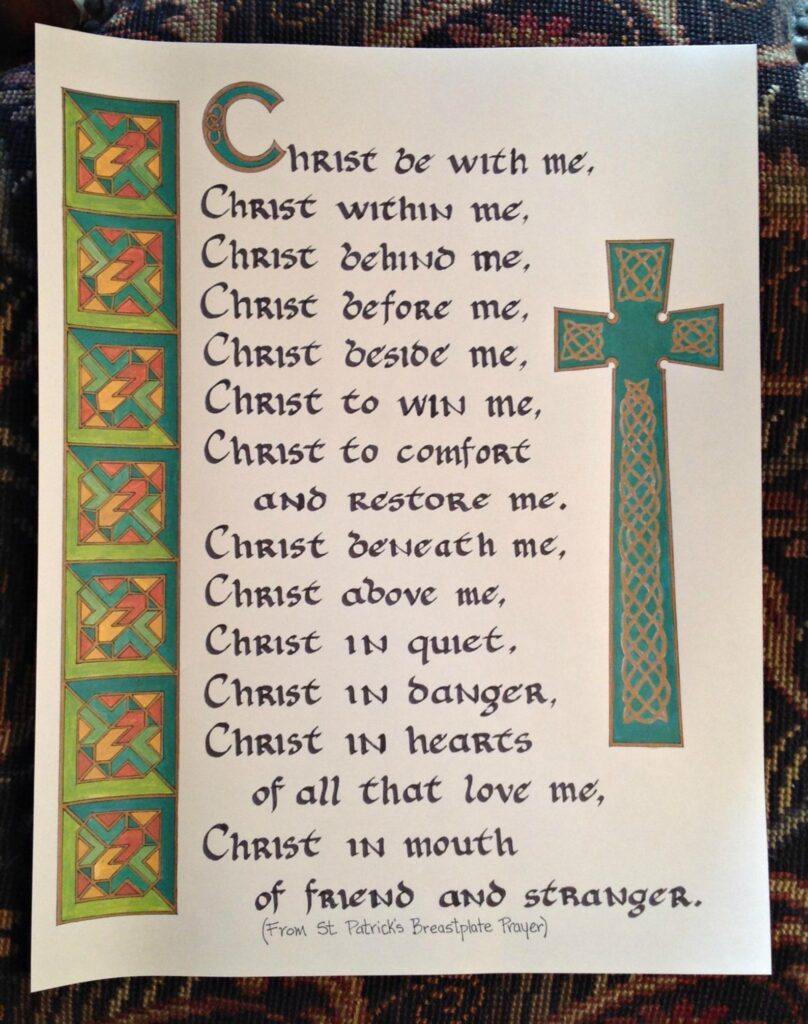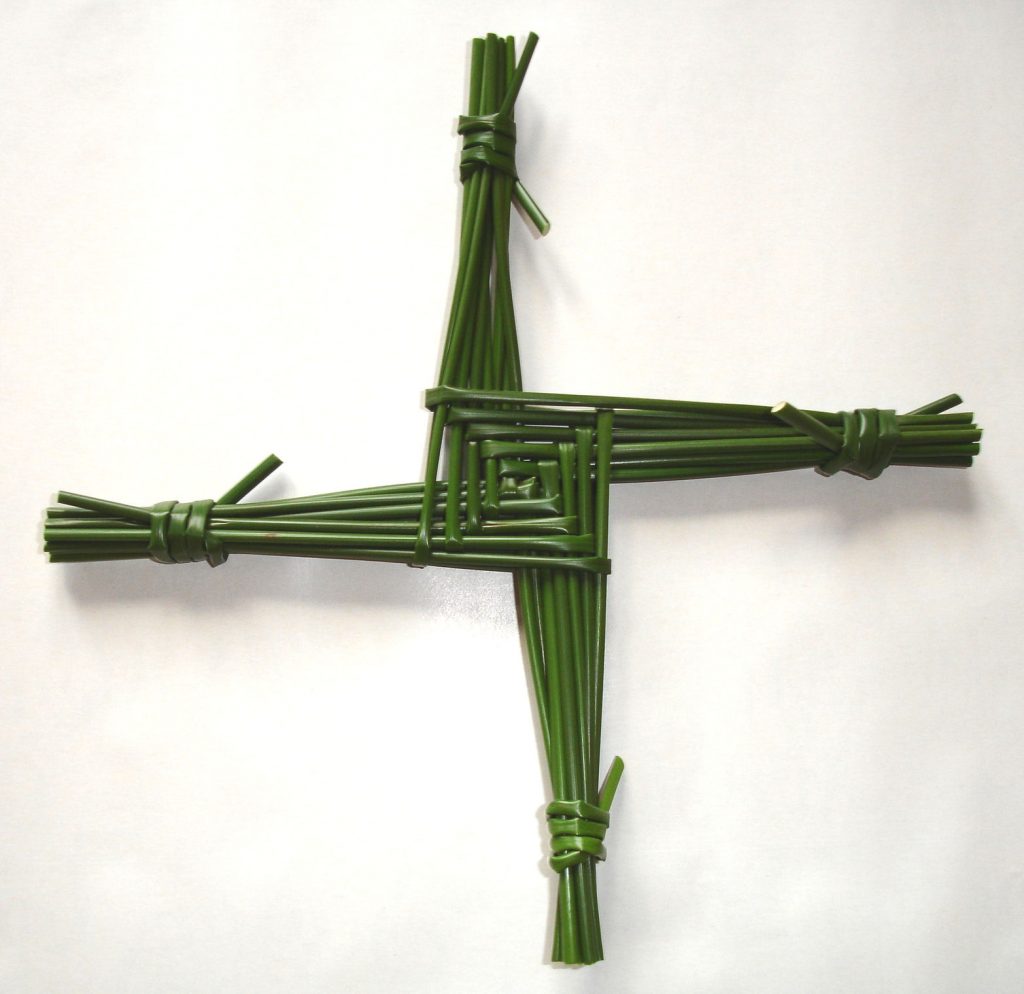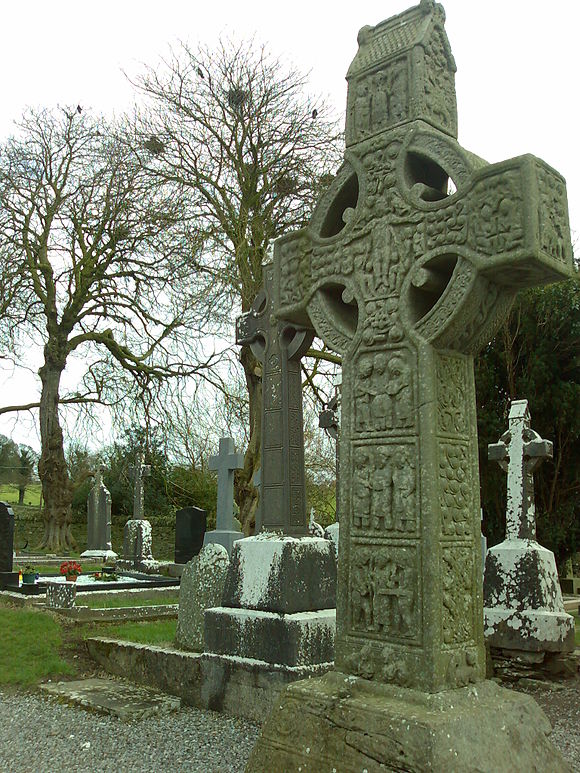St Patricks Day reflections and observances
Songs by Irish performers, bands, and musicians or songs about Ireland:
- Saints and Sinners by Paddy Casey: https://youtu.be/yMZSxehxHEc
- Song for Ireland by Luke Kelly: https://youtu.be/PlJVWV0MfIw
- Beautiful Day by U2: https://youtu.be/co6WMzDOh1o
- Drunken Lullabies by Flogging Molly: https://youtu.be/89NjEeHku8o
- The Auld Triangle by The Punch Brothers with Marcus Mumford and Justin Timberlake: https://youtu.be/ikPvlNndzho
- Four Green Fields by Sarah Moore: https://youtu.be/g6qJyLkLuJo
- Riverdnace by Bill Whelan: https://youtu.be/3ZPNqB6msqM
- The Wind that Shakes the Barley performed by The Chieftains (instrumental): https://youtu.be/k8eeUiGjUZc
- Funky Ceilie (Bridie’s Song) by Black 47: https://youtu.be/GViXO8bZDz8
- The Fields of Athenry by Paddy Reilly: https://youtu.be/v9InnXP64To
- Rocky Road to Dublin by The High Kings: https://youtu.be/0QdbeM2JWYE
- Lonesome Boatman by Eddie & Finbar Furey (instrumental): https://youtu.be/F8rULrp_J5E
- Only Time by Enya: https://youtu.be/7wfYIMyS_dI
- Grace byAoife Scott, Róisín O & Danny O’Reilly:https://youtu.be/HuZPN4cWNpg
- Take Back the City by Snow Patrol: https://youtu.be/sY_hkrQNAQo
- God Save Ireland by The Wolfe Tones: https://youtu.be/NL2U-AQHm5A
- Zombie by The Cranberries: https://youtu.be/6Ejga4kJUts
- The Boys Are Back in Town by Thin Lizzy: https://youtu.be/hQo1HIcSVtg
- The Foggy Dew performed by Sinead O’Connor & The Chieftains: https://youtu.be/yaS3vaNUYgs
- The Irish Rover by The Pogues & The Dubliners: https://youtu.be/cZXnJ4UYh40
- Molly Malone by The Dubliners: https://youtu.be/iT-IfGokcCI
- Irish Pub Song by The Rumjacks: https://youtu.be/tDTQQWSmo8s
- The Healing Room by Sinead O’Connor: https://youtu.be/A9-0r9Ouvw4
- I’m Shipping Up to Boston by The Dropkick Murphys: https://youtu.be/x-64CaD8GXw
- The Fisherman’s Blues by The Waterboys: https://youtu.be/a4UQJwd3awQ
- On Raglan Road by Luke Kelly (from lyrics by poet by Patrick Kavanagh): https://youtu.be/EuafmLvoJow
- Breathless by The Corrs: https://youtu.be/vzerbXFwGCE
- The Men Behind the Wire by The Clancy Brothers:https://youtu.be/9MmlJK229LQ
- Brown Eyed Girl by Van Morrison: https://youtu.be/UfmkgQRmmeE
- Whiskey in the Jar by Thin Lizzy: https://youtu.be/6WDSY8Kaf6o
- Where the Streets Have No Name by U2: https://youtu.be/3FsrPEUt2Dg
- I Don’t Like Mondays by The Boomtown Rats: https://youtu.be/VPtu5V3kHTM
- Galway Girl by Ed Sheeran: https://youtu.be/87gWaABqGYs
- Carrickfergus by The Dubliners & Jim McCann: https://youtu.be/S1kUijTWkSg

ST PATRICK’S PROTECTION PRAYER
Full text may be found here: https://parish.rcdow.org.uk/greenford/wp-content/uploads/sites/127/2020/03/St-Patricks-Breastplate.pdf
Abbreviated version: St Patrick’s Breastplate or The Lorica
I arise today
Through the strength of heaven;
Light of the sun,
Splendor of fire,
Speed of lightning,
Swiftness of the wind,
Depth of the sea,
Stability of the earth,
Firmness of the rock.
I arise today
Through God’s strength to pilot me;
God’s might to uphold me,
God’s wisdom to guide me,
God’s eye to look before me,
God’s ear to hear me,
God’s word to speak for me,
God’s hand to guard me,
God’s way to lie before me,
God’s shield to protect me,
God’s hosts to save me
Afar and anear,
Alone or in a multitude.
Christ shield me today
Against wounding
Christ with me, Christ before me, Christ behind me,
Christ in me, Christ beneath me, Christ above me,
Christ on my right, Christ on my left,
Christ when I lie down, Christ when I sit down,
Christ in the heart of everyone who thinks of me,
Christ in the mouth of everyone who speaks of me,
Christ in the eye that sees me,
Christ in the ear that hears me.
I arise today
Through the mighty strength
Of the Lord of creation.

Instructions to make the St Brigid’s cross:
- WRITTEN INSTRUCTIONS: https://scoil-bhride.com/how-to-make-a-st-brigids-cross/
- VIDEOS:
PRAYER of ST BRIGID
May Brigid bless the house
wherein you dwell.
Bless every fireside,
every wall and door.
Bless every heart
that beats beneath its roof.
Bless every hand
that toils to bring it joy.
Bless every foot
that walks its portals through.
May Brigid bless
the house that shelters you.
St Brigid’s Cloak (one legend of St Brigid)

She approached the King of Leinster requesting the land on which to build her monastery. The place she selected in Kildare was ideal. It was near a lake where water was available, in a forest where there was firewood and near a fertile plain on which to grow crops. The King refused her request. Brigid was not put off by his refusal. Rather, she and her sisters prayed that the King’s heart would soften. She made her request again but this time she asked, “Give me as much land as my cloak will cover.”
Seeing her small cloak, he laughed and then granted this request. However, Brigid had instructed her four helpers each to take a corner of the cloak and walk in opposite directions – north, south, east and west. As they did this the cloak began to grow and spread across many acres. She now had sufficient land on which to build her monastery. The King and his entire household were dismayed and amazed. They realised that this woman was truly blessed by God. The King became a patron of Brigid’s monastery, assisting her with money, food and gifts. Later he converted to Christianity. It was on this land in Kildare that she built her dual monastery c.470.

THREE STORIES about St Patrick (from salt+ … full article:https://www.saltproject.org/progressive-christian-blog/2019/3/12/a-brief-theology-of-st-patricks-day)
… And so in honor of St. Patrick’s Day this year, three ancient, delightful stories — but first, a little background.
St. Patrick is one of the patron saints of Ireland. He died just over fifteen hundred years ago, reportedly on March 17, and he is closely associated with the growth of Christianity throughout the Emerald Isle, the rise of Celtic styles of Christianity, and of course that famous shamrock (more on that in a bit).
He first encountered Ireland as an enslaved young man. Patrick was born in the Roman imperial province of Britannia (today known as Great Britain), and as a youth he was captured by Irish raiders and forced to serve as a sheep herder. After six years of captivity, he escaped and made his way home — only to return to Ireland years later as a bishop and missionary
St. Patrick’s Walking Stick
Patrick was an itinerant preacher, and it is said that he carried a walking stick made of ash wood. In his travels between Britannia and Ireland, whenever he would stop to preach, he would plant the stick beside him, upright in the ground. At the English site now called Aspatria (“ash of Patrick”), he preached so patiently, the story goes, that when at last he finished, he couldn’t remove the stick. It had sprouted roots, you see. It was already on its way to becoming a tree
St. Patrick’s Bell
In his life as an enslaved sheep herder, St. Patrick was quite familiar with the sheep bell: a simple bell of hammered iron with a small handle on top. As a bishop, that bell continued to have great meaning for him, perhaps because it reminded him of his youth, or of the ringing good news of the gospel, or of his ongoing role as a pastor (from the Latin pastorem, “shepherd”). Whatever the reason, he was laid to rest with one resting on his breast: the dead shepherd, buried with his bell.
Sometime later, the bell was removed from the tomb as a precious relic. And in the eleventh century, artists intricately covered the bell in bronze, gems, and Celtic designs of crosses and birds — not to make the bell appear more holy, it is said, but rather to shield the eyes of onlookers from the brilliant holiness of the iron original. Now on display in Dublin’s National Museum, St. Patrick’s Bell is considered one of Ireland’s signature treasures.
St. Patrick’s Shamrock
The Christian idea of the divine Trinity — God’s simultaneous threeness and oneness as Creator, Christ, and Holy Spirit — has always been a great challenge for preachers to grasp and explain. St. Patrick did it this way: he looked around, and then plucked a shamrock from the ground at his feet. Three leaves, he said, and yet one stem, one life. Add to that the shamrock’s vibrant shade of green, the color of growth and vitality — and while it’s easy to imagine a more technical, lengthy explanation of the Trinity, it’s hard to imagine a better one.
